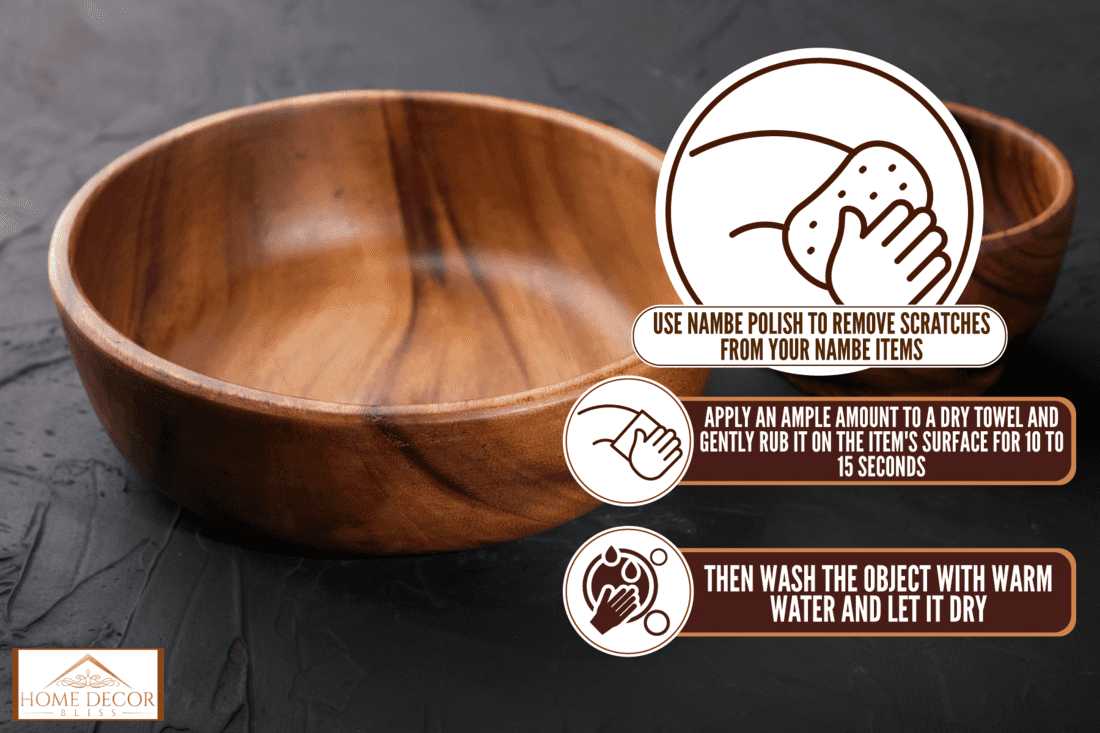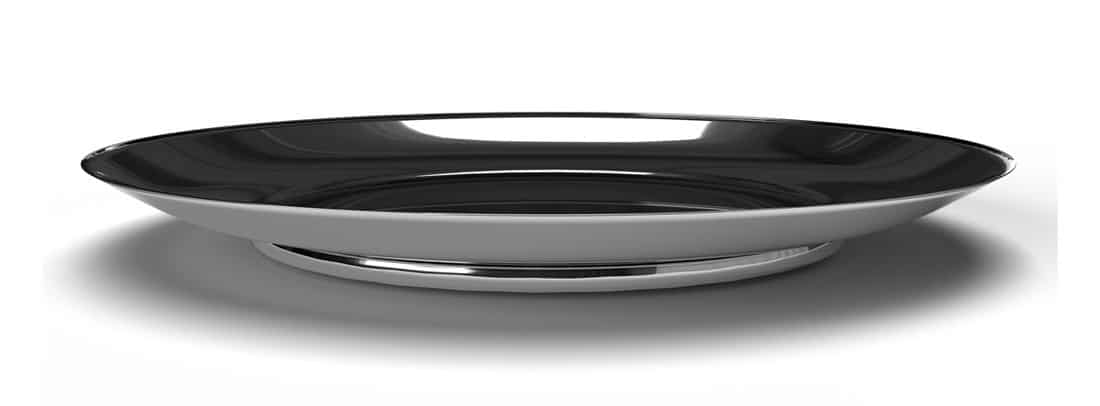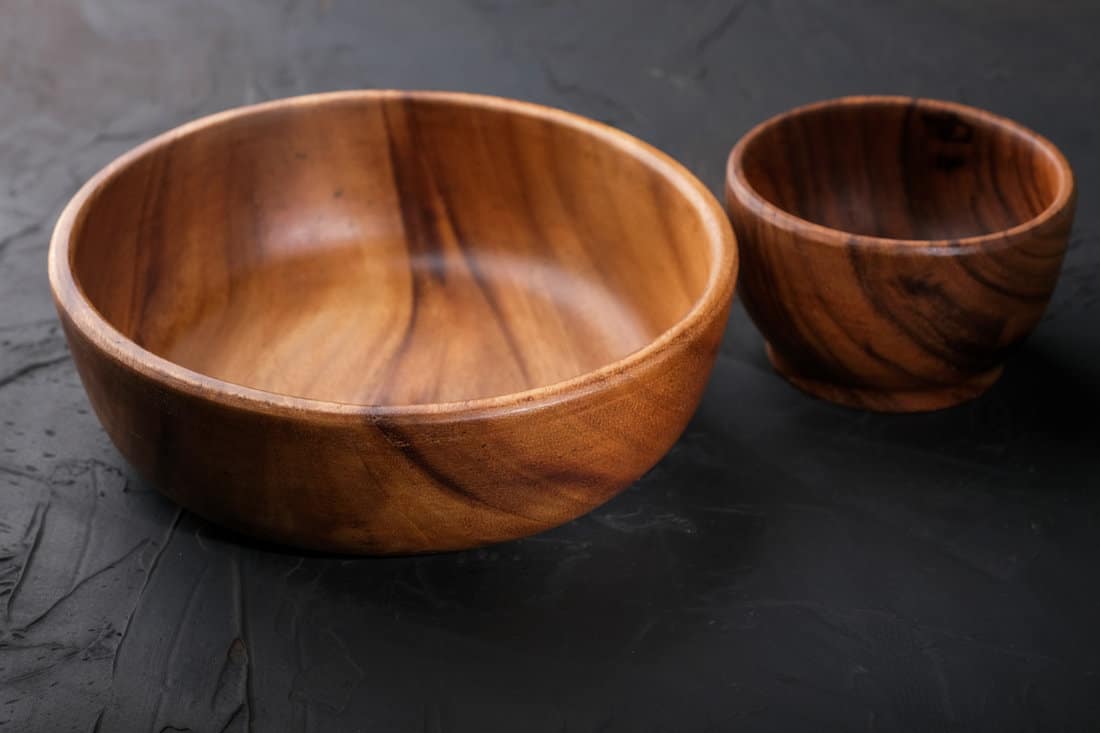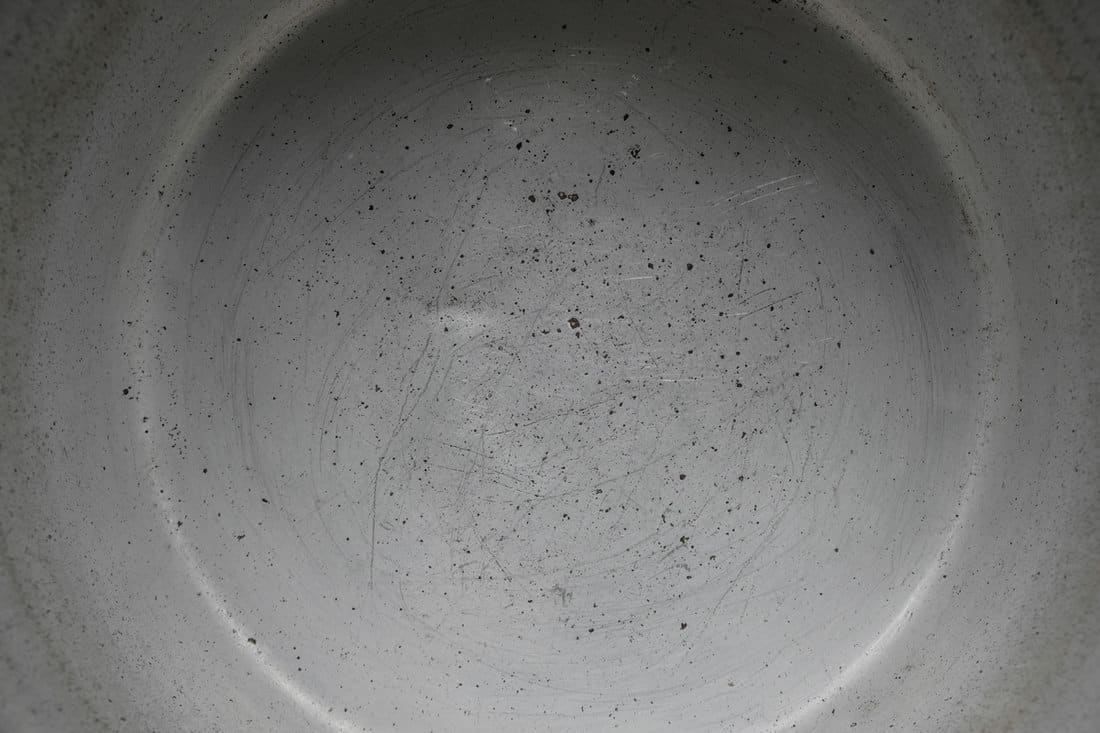Nambe creates a wide range of products, including tableware and decor, that are both artistic and useful. However, the surfaces of their products are susceptible to scratches. We've researched this topic and found some answers to the problem of scratches on your Nambe items.
Use Nambe Polish to remove scratches from your Nambe items. Apply an ample amount to a dry towel and gently rub it on the item's surface for 10 to 15 seconds. Then wash the object with warm water and let it dry.
Nambe Polish can be applied to alloy, wood, crystal, and cast iron items. This post will discuss what Nambe items are made of, how to remove scratches from Nambe items, and how to take care of them properly. Please continue reading to find out answers to these queries.

What Are Nambe Items Made Of?
Nambe has been creating high-quality designs since 1951. They assure people with their products' extraordinary design and everyday practicality. Nambe can be used, displayed, and stored for years without losing its luster.
We sometimes add affiliate links and content that was curated and created by our team with the help of advanced ai tools to help showcase the best design styles.

An eight-metal alloy is used to create Nambe items in various sizes and shapes, from bowls for food service to elaborate works of art and home décor display products.
The alloy metal with aluminum can be used for serving, freezing, and cooking at temperatures up to 500 degrees and can retain heat or cold.
These characteristics make Nambe objects both practical and beautiful. Although the alloy has a silvery appearance, it won't be tarnished like silver.
You can customize most Nambe metal and crystal objects with your text or graphics, including a monogram, date, or brief message.
They use a method called etching. For the incredibly crisp edges of Nambe alloy items, the laser-etching procedure is followed by sandblasting.
The hands of master artisans craft their metal pieces, and each piece undergoes a rigorous quality-control examination before being engraved with its item number and the Nambe brand.
Click here to see this Nambe love bowl on Amazon.
Removing Scratches From Nambe Items
Every day, surfaces on your home's objects are susceptible to scratching. All these scrapes are bothersome, shallow or deep, and challenging to remove.
Some pieces of Nambe items are made of a special eight-metal alloy that is entirely food safe and noted for its beauty and brilliance. The exceptional temperature retention properties of Nambe alloy make it ideal for serving hot and cold dishes.
No matter how scratched or damaged your Nambe items are, there's a way to repair them. Use Nambe Polish to remove scuffs from your Nambe products.
Before application, the metal surface should be dry and free of surface dirt. Apply a tiny amount of Nambe Polish to a soft, dry towel to maintain and restore luster.
Gently rub in a back-and-forth motion for 10 to 15 seconds. To remove the residue, lightly buff with a soft polishing cloth.
After polishing, you should properly wash the object in warm, soapy water, then dry it with a soft towel.
Click here to see this Nambe metal polish on Amazon.
How To Care For Nambe Items
Nambe is best recognized for its exclusive blend of eight metals that serves as its trademark alloy. It is stunning but surprisingly practical, safe in the oven and freezer, and has the extraordinary capacity to maintain temperature for extended periods.
You should take care of these items if you want them to last longer. Depending on the product and its material, each type of Nambe item requires different cleaning procedures.
Alloy

If your Nambe product has a lid that will form a tight seal, clean and dry the interior before putting the cover on.
Never leave Nambe alloy in standing water in the dishwasher. Use a soft cloth to dry the Nambe alloy product after washing it with a mild soap.
Metal surfaces shouldn't be treated with abrasive pads like steel wool. You will harm your metal surface further and add more unsightly scratches if you attempt to buff out a scratch. Use non-abrasive soft sponges, microfiber cloths, and cleaning solutions instead.
Before using any dish, lightly cover it with vegetable oil. Foods that are highly acidic and may cause minor discoloration to the finish create a layer of protection. Also, don't ever put a metal Nambe product in the microwave.
Nambe dishes are designed for serving food, not storing it. You should refrain from storing food in metal Nambe products for longer than three hours to prevent discoloration.
Click here to see this Nambe alloy platter on Amazon.
Cast Iron
Cast iron is a material that performs well when used to prepare and cook food, according to modern standards. Its interior is enameled and lead-free.
It can cook in the oven at reduced heat settings because of its capacity to retain heat well. You may place it in the fridge for advanced meal preparation or food storage.
Wood

You can handwash Nambe items made of wood with a moderate detergent and dry them immediately with a soft towel. Avoid leaving wood objects in the dishwasher.
Don't clean your Nambe wood product with harsh tools like scouring pads. This can harm the wood's surface and lessen the appeal of your Nambe wood product. Also, you cannot heat wood products in a microwave.
You may apply mineral oil to wood surfaces to maintain their beauty.
Click here to see this Nambe acacia wood salad bowl on Amazon.
Copper
Every Nambe item is unique due to its handcrafted finish. It has the same cold retention properties as traditional Nambe alloy. You should only wash copper Nambe items with mild soap and water.
The entire surface is covered with food-safe lacquer. You should not use copper Nambe items in a microwave. Nambe plated products can be pre-chilled in the freezer or refrigerator to keep meals cool.
Avoid using sharp objects during plating because they may scratch the surface. You cannot use metal polish on this item.
Click here to see this Nambe copper canyon bowl on Amazon.
Crystal
Nambe crystal is hand-cut and very fragile. You can hand wash crystal items in warm water with a gentle detergent to avoid spots. You may also use rubbing alcohol for crystal products.
Avoid using hot water or harsh detergents for crystal items. The crystal products from the Nambe brand should never be left exposed to the sun for an extended period.
You should protect the crystal from unexpected changes in temperature, which may cause pieces to break.
Click here to see this Nambe crystal heart bowl on Amazon.
Enamel
You can use soft towels to remove dust from the surface. Your Nambe items may require a fast dusting every few weeks or so, depending on where you store them.
Items from the Nambe line that have an enamel color can be hand washed with a moderate detergent and a gentle cloth. You should not leave these products in standing water for long periods.
Apply a thin layer of vegetable oil to all surfaces that come into contact with food. Vegetable oil aids in preventing finish stains. Apply it by rubbing it on with a clean, soft cloth.
You can place the item in the freezer or heat it in the oven.
What Do You Polish Nambe With?
With the proper maintenance, your Nambe product will look gorgeous and keep its shiny finish for many years. It is possible to use a Nambe Polish to maintain the original sheen. You can use metal polish to soften and smooth metal areas with scratches.
You may also utilize micro-abrasive pads, mild household acids, long-lasting restorative polishes, and sand the surface to removing scratches from metal.
Whatever technique you use, always polish against the grain of the metal and never in a circular motion to avoid further scratches. Use a soft cloth to wipe the surface.
In Closing

Every piece created by Nambe is functional art that you can use daily. When your metal has scratches, you can utilize various techniques to repair them, and some items might assist you in keeping the metal surface clean and shiny.
You can always use Nambe Polish to treat the scratches on your Nambe items. You'll need to apply it on a dry towel and rub it on the surface for a few seconds before washing and drying the item.
When it comes to metals, you may also utilize micro-abrasive pads, mild household acids, long-lasting restorative polishes, and sand the surface.
Before you go, check out these other posts that you might find interesting:







